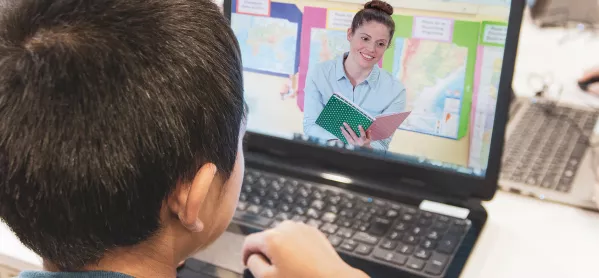Is tech the answer to creating more confident readers?
When it comes to improving children’s reading skills, technology can play a fascinating role. Indeed, the literacy gains became particularly apparent during the pandemic, when classrooms and their books were largely unavailable and screen-based learning came to the fore.
Take the practice of teachers recording themselves reading stories to be watched by their classes at home, for example. It was something that teachers in the Greenwood Academies Trust in Nottingham did during the pandemic, with extremely positive results, says IT curriculum adviser Natasha Epton. Teachers created a “bedtime reading channel” using an app called Flipgrid, she explains, where they would post videos of themselves reading stories for children to enjoy at home with their parents.
“Having the ability to watch a teacher read a story means they’re still accessing it,” Epton says. “It doesn’t always have to be about the child reading. They’re accessing that language and modelling, and they’re still hearing all of that vocabulary and uplevelling their skills in that way, too. It can have a huge impact.”
The response from families was “really positive,” she says, and the children have also picked up the habit, recording themselves reading stories for other year groups to watch.
How tech can help literacy teaching
Schools in the trust were also involved in the pilot of Reading Progress, a new app in Microsoft Teams that enables pupils to record themselves reading aloud in an environment that is comfortable for them - removing much of the stress around difficulties reading in public - and get private, personal feedback (both automatically within the app and from staff) as well as targeted support.
“They can see where they’re getting things wrong and go away and practise,” Epton explains. “It builds their confidence, especially if they have low self-esteem or don’t always want to be asking the teacher where they’ve gone wrong.
All those things that we keep saying to the children that they need to do and work on, they can actually see it for themselves and that’s really powerful. They know their targets and they can keep track of their own progress really independently. They can work on it themselves as well. Rather than it just being something that is at school, they can go away and do it independently at home, too. We’ve found the uptake is huge, because it’s a less threatening environment, and it’s easier for them to access and it’s easier for them to do it independently.”
At The Portsmouth Academy, staff have been using Reading Progress to get an accurate picture of where their students’ reading abilities are at now, after the disruption of the pandemic, explains English associate leader Chiara Fraser.
“They’ve had almost two years of disruption to their education, so the need is higher than ever before,” she says. “Whereas in previous years it would take us about 45 minutes to do a one-to-one reading test, now [with Reading Progress] we can do the same test in 20 minutes across 250 children.”
This key data on reading fluency is now available quickly and presented comprehensively, Fraser explains, which is a relief at a time when the school has “never experienced the number of children with additional learning needs that we’ve had this year”.
The school launched a one-to-one device scheme for Year 7s in September, ensuring that every student in the year group had their own device to use in school - and it is having a major impact on how reading takes place, Fraser says. “There’s a misconception that reading is just part of English lessons. The devices have allowed us to overcome those barriers to reading being a whole-school strategy. They allow us to use accessibility tools to ensure that every child can access the text in different ways. So, as a school, we’re able to build reading into every lesson, so it’s something that happens five times a day.”
Those accessibility adjustments include elements such as font size, text type and translation, she says. Once these have been set up to meet the learner’s specific needs, they stay in place, saving teachers valuable time on creating resources for differentiation, and facilitating “constant reading practice, constant reinforcement”.
Meanwhile, Epton adds, staff are continuing to find new and inventive ways to use tech to address issues of reading confidence, including employing Microsoft Forms for reading comprehension exercises, where extracts can be displayed above questions that can be easily marked and collated. “It’s a lot quicker to assess for staff and it’s also easier for the students to access,” she explains.
For Fraser, the increasing use of tech in schools offers new hope of closing the literacy gap for good. “I’ve never felt as optimistic and excited and really quite sure of the potential for change before,” she says. “The need has become huge but we have the resources to think about how we can deal with that. People are excited to use the devices to do something we’ve been doing the same way for years and not getting the results we want.”

